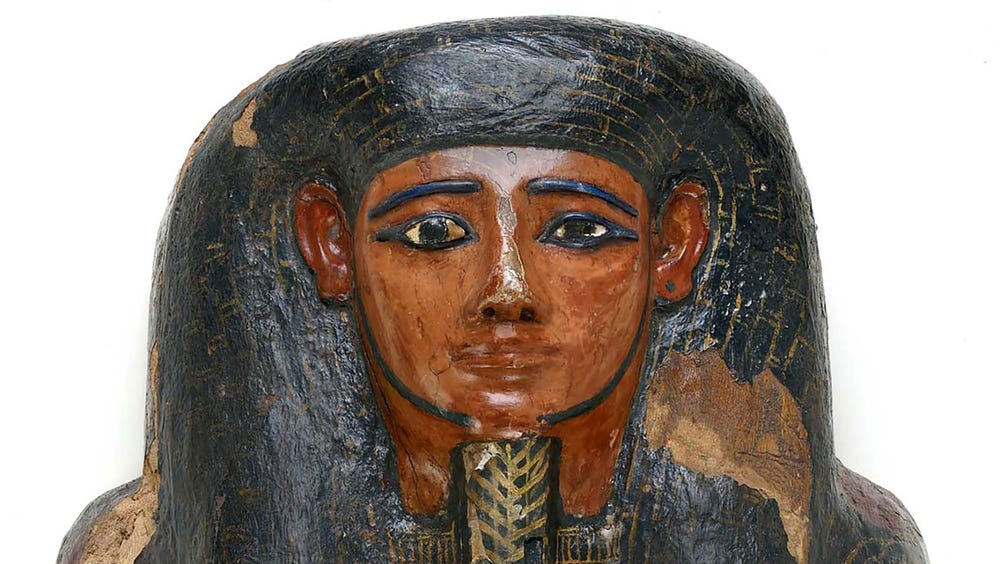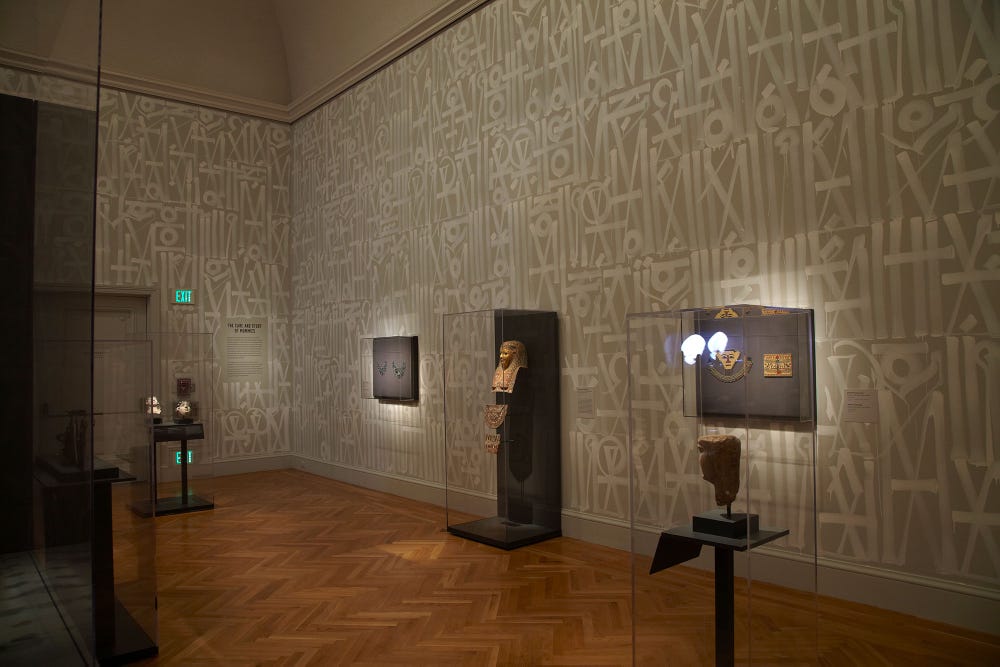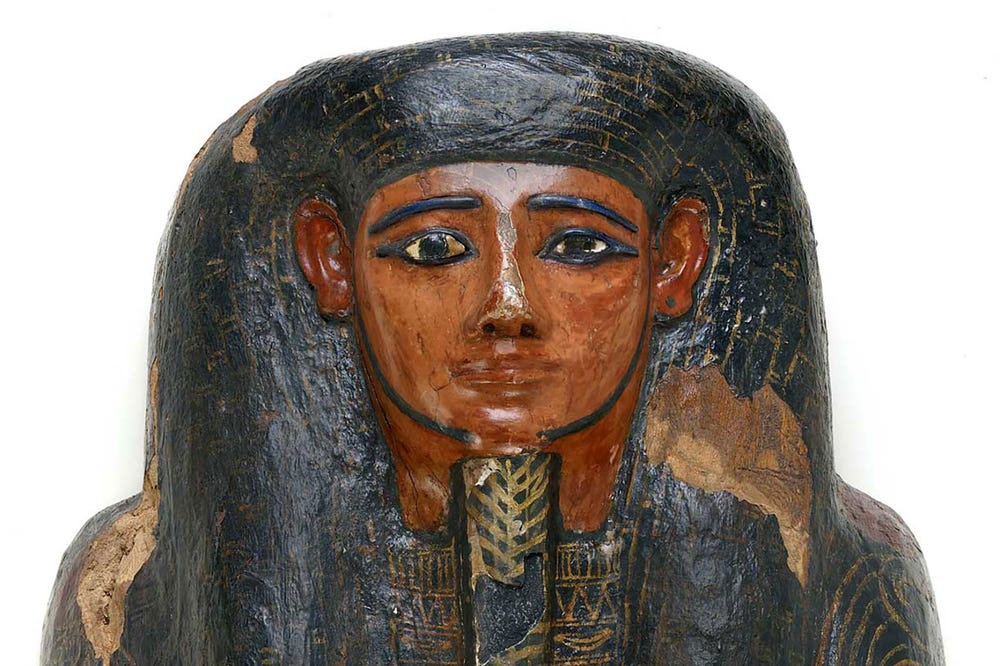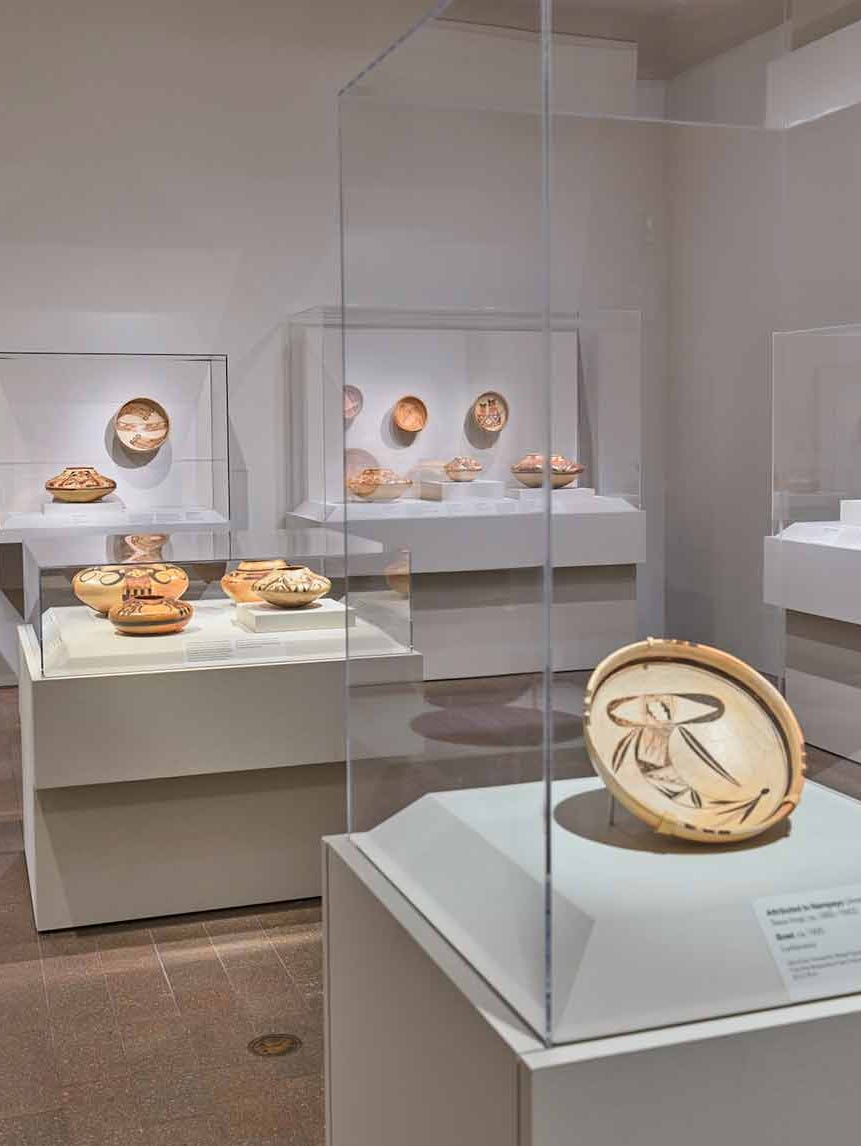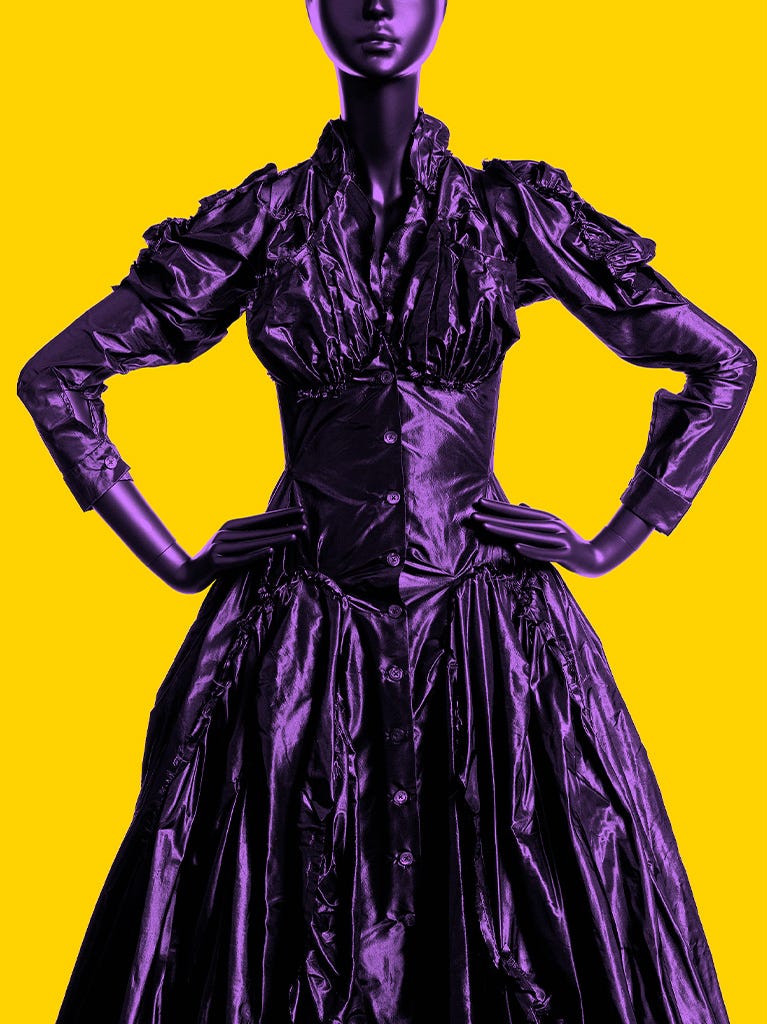Coffin of Irethorrou (detail), Egyptian, Akhmim, ca. 500 BC. Wood with polychrome. FAMSF, gift of First Federal Trust Company (from the Estate of Jeremiah Lynch), 42895
The Future of the Past: Mummies and Medicine
Ancient Egypt meets modern medicine in this exhibition that makes use of state-of-the-art scientific techniques to explore two of the Fine Arts Museums’ mummies. An interdisciplinary team of scientists, Egyptologists, physicians, and museum curators and conservators has learned more about how these embalmed individuals lived, died, and were prepared for eternity.
Rebecca Fahrig and Kerstin Müller of Stanford University Medical School’s department of radiology have conducted high-resolution, three-dimensional computed tomography (CT) scans of the mummies, revealing long-held secrets. The resulting data have been studied by Jonathan Elias of the Akhmim Mummy Studies Consortium, who offered much of the interpretation seen in the exhibition.
One of the mummies investigated is that of Irethorrou, a priest from an important family living in Akhmim in middle Egypt about 2,600 years ago. The Future of the Past includes information that has been gleaned about Irethorrou’s lifestyle, the society in which he lived, his religion, and the funerary beliefs of his time. The second mummy, perhaps 500 years older, is that of a woman traditionally known as Hatason. Neither her mummy nor her coffin has fared as well as those of Irethorrou, and they present a stark contrast to Irethorrou’s perfectly preserved body.
Visitors can examine both mummies by means of an interactive virtual dissection table supplied by Anatomage, a San Jose medical solutions company. Hauntingly beautiful amulets and tomb furnishings are also displayed.
Film
Hatason, a mummy from the Fine Arts Museums’ collection, was CT scanned at the Stanford University School of Medicine’s Department of Radiology. With the help of mummy expert Jonathan Elias, and other talented scholars and technicians, more about Hatason was revealed, including the late New Kingdom Period in which she lived and died.
The mummy Hatason, Egyptian, Asyut, late New Kingdom (Dynasty 20) or Dynasty 21, 1100–1000 BC. FAMSF, gift of John P. Young, 2082. Image rendered by Anatomage
Everything looked like it was in place — her head, her arms, her legs — an amazing feat for something that is 3000 or so years old. She looked as if she was in perfect condition — until we did the CT scan.
Curator in charge Renee Dreyfus on the mummy Hatason
Renowned street artist RETNA was invited to paint the walls for the The Future of the Past: Mummies and Medicine exhibition.
Gallery
Sponsors
This exhibition is organized by the Fine Arts Museums of San Francisco. Support was provided by the Ancient Art Council; Skot Jonz; Keesal Young & Logan; Mary N. Lannin; Elizabeth Moyer, PhD, and Michael Powanda, PhD; and Dr. and Mrs. Bernard von Bothmer in honor of Dietrich von Bothmer.
